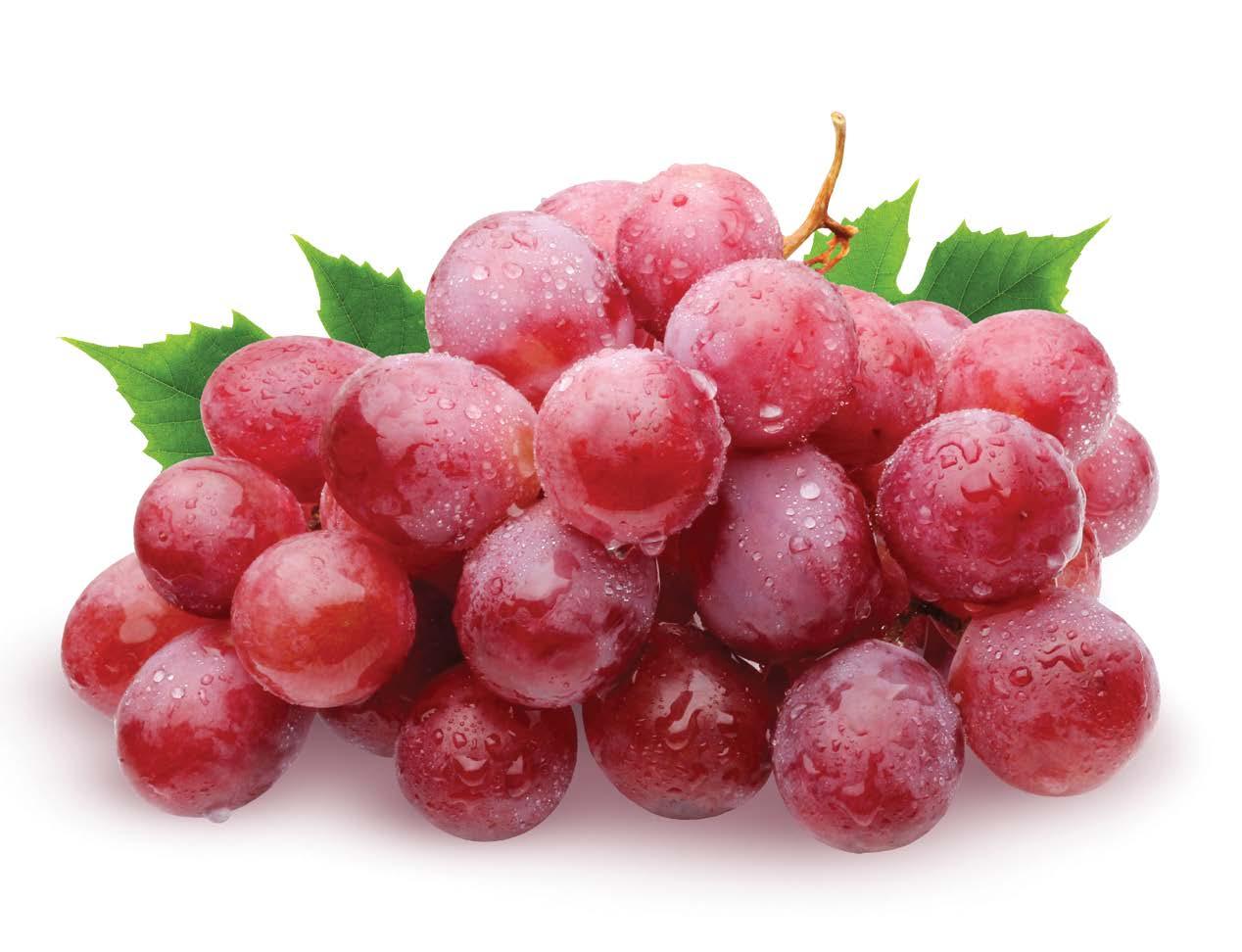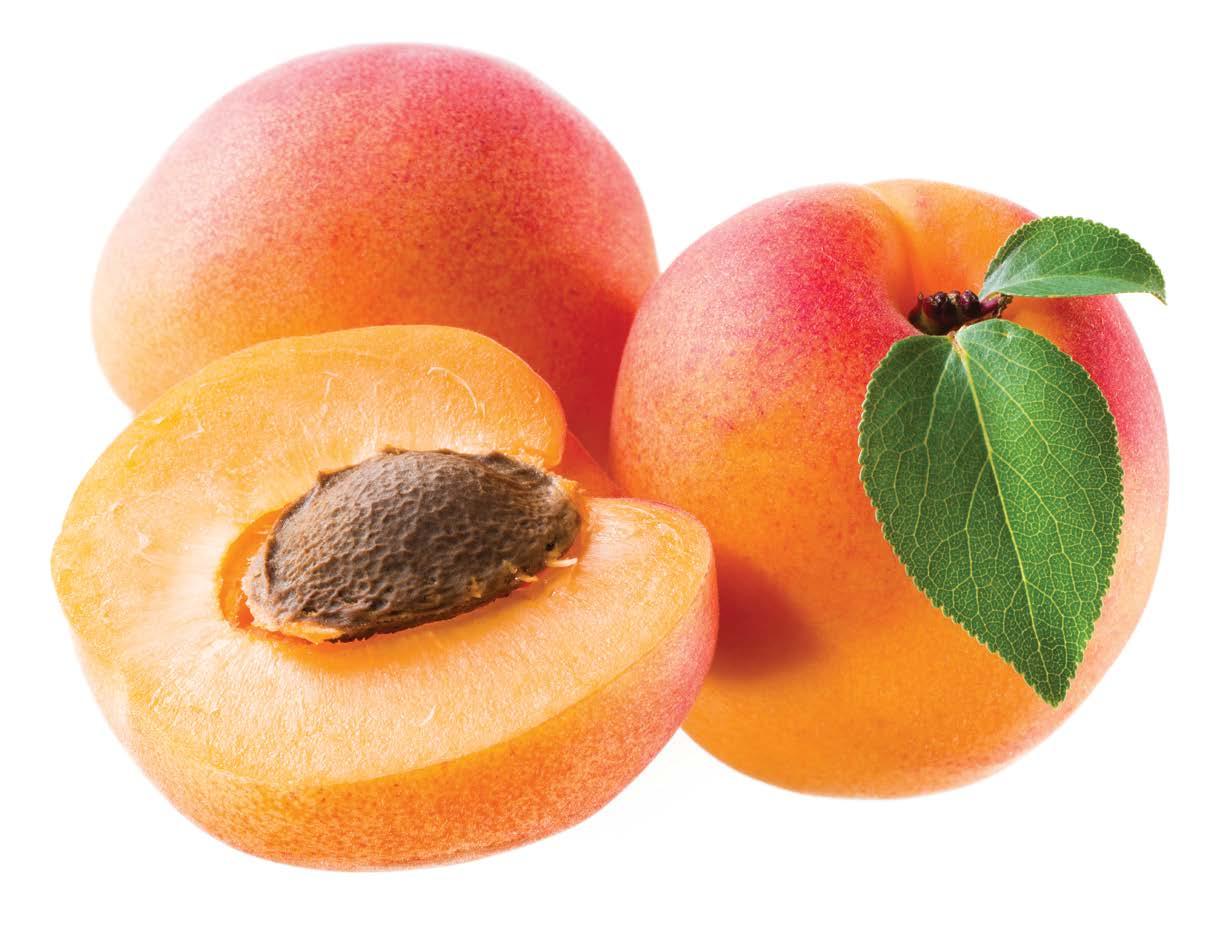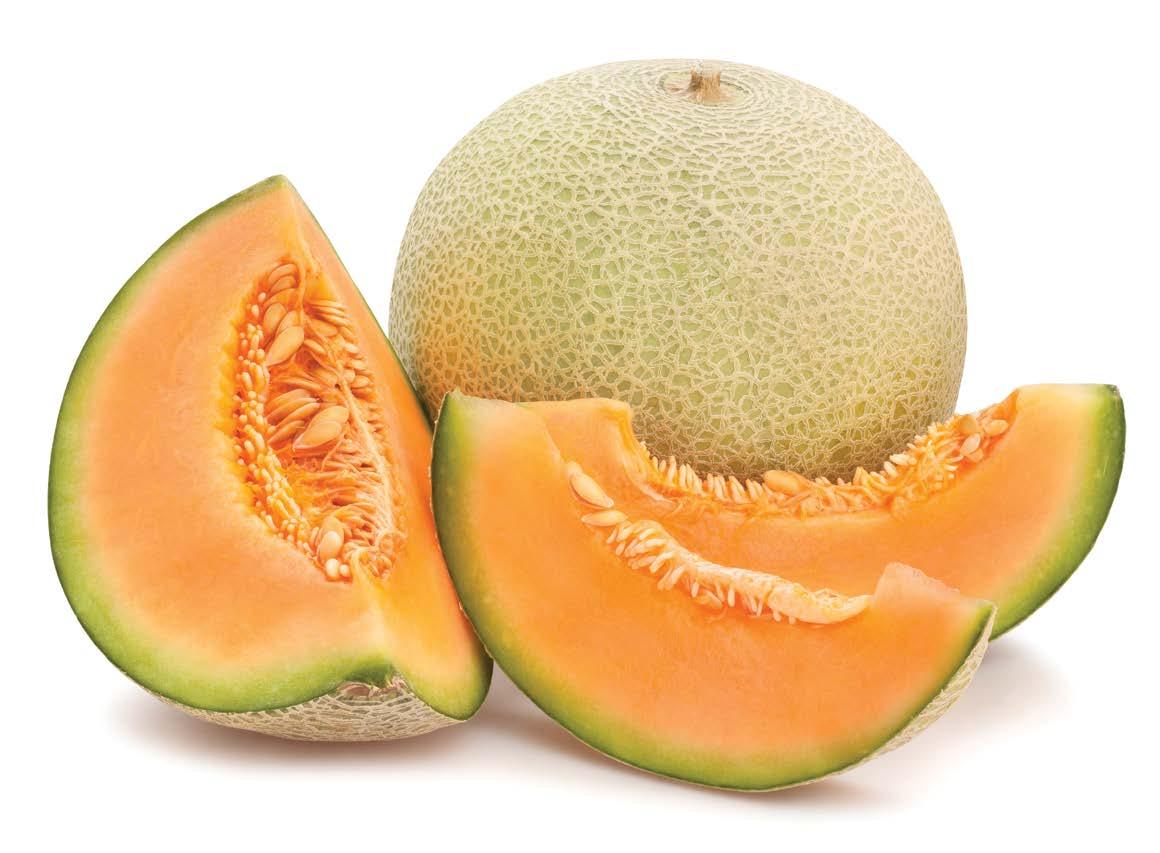Apricot trees will generally produce fruit for 20-25 years.
Apricots NUTRITION Apricots are a good source of several nutrients, such as: Antioxidants are packed in these fruits, which protect the body from aging and disease. The fresher and riper the fruit, the more antioxidants it has. Vitamin A protects the eyes, strengthens your immune system, and supports a healthy heart. Soluble and Insoluble Fiber work together to keep you fuller for longer, aid in losing weight, and assist with keeping you regular. They can improve blood sugar and lower cholesterol.
Nutrition Facts Serving size
Calories
74.4
Total Fat 0.6g
1%
Saturated Fat 0g
0%
Polyunsaturated Fat 0.1g Monounsaturated Fat 0.3g Cholesterol 0g Sodium 1.6mg Potassium 401mg Total Carbohydrate 17.4g Dietary Fiber 3.1g
0% 0% 11% 6% 12%
WAYS TO E AT A N D C OOK W I T H A P RIC OTS
Sugar 14.3g
It doesn’t get much easier than this. Eat them raw, peel and cooked, poached or baked.
Vitamin A
60%
Vitamin C
26%
Apricot Yogurt Muffins: Peel, cut, pit, and chop 10 apricots. Preheat an oven 350°F. In a small bowl, mix the 1 cup flour, ½ cup sugar, a pinch of salt, and 2 teaspoons baking powder. In another bowl, combine 2 teaspoons vanilla, 2 large egg, ½ cup yogurt, and ½ stick butter. Stir into dry ingredients just until moistened. Fold in apricots. Fill greased or paper-lined muffin cups threefourths of the way full. Bake for 20-22 minutes.
18
1 cup of apricot halves
Amount per serving
Fruit & Vegetables: Facts, Nutrition and Recipes
Protein 2.2g
4%
Calcium
2%
Iron
3%
Vitamin D
0%
Vitamin B6
4%
Magnesium
4%
*The % Daily Value (DV) tells you how much a nutrient in a serving of food contributes to a daily diet. 2000 calories a day is used for general nutrition advice.









































